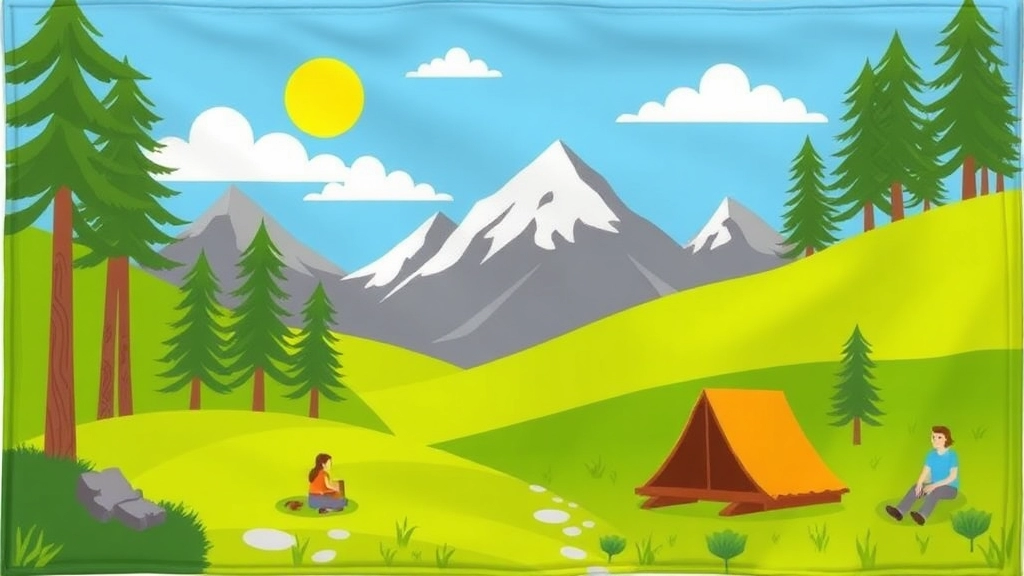Welcome to the Ultimate Guide on Summer Camp Flags!
If you’ve ever wondered about the different types of flags and how they can elevate your camp experience, you’re in the right place. From team flags that boost camaraderie to custom designs that make your camp unique, we’ll explore all the options, uses, and benefits of incorporating flags into your summer program. This article will help you navigate the world of camp flags, ensuring that your camp stands out and runs smoothly.
Enhancing Your Camp Experience
Whether you’re a camp organizer looking to enhance team spirit or a marketing guru aiming to attract more campers, this guide has got you covered. We’ll delve into popular uses of camp flags, customization options, materials, durability, and even some design tips. Plus, we’ll share best practices for installation and maintenance, so your flags stay in top shape all season long.
Ready to Make Your Summer Camp Unforgettable?
Let’s dive in!
Types of Summer Camp Flags
Alright, let’s talk summer camp flags. Ever wondered what kind of flags are out there and how they can make your camp experience even better? You’re not alone. Many camp organisers and participants often ask, “What types of flags are best for our summer camp?” Let’s break it down.
The Basics: What Are Summer Camp Flags?
Summer camp flags are more than just pieces of fabric fluttering in the wind. They serve multiple purposes, from marking territories to boosting team spirit. Here are the main types of summer camp flags you’ll come across:
Team Flags
Team flags are essential for any camp that involves group activities or competitions. These flags are usually emblazoned with team names, mascots, or colours. They’re perfect for fostering a sense of camaraderie and friendly rivalry.
Activity Flags
Activity flags are used to designate areas for specific activities. Whether it’s archery, swimming, or arts and crafts, having a flag to mark the spot makes it easier for campers to find their way around.
Country Flags
Many international camps use country flags to represent the diverse backgrounds of their campers. It’s a great way to celebrate cultural diversity and make everyone feel included.
Event Flags
These flags are used to signal special events or announcements. Think of them as the camp’s way of saying, “Hey, something cool is happening here!”
Custom Flags
Sometimes, you need something unique. Custom flags allow you to design your own, whether it’s for a special event, a unique team, or just to add a personal touch to your camp.
Why Do We Need Different Types of Flags?
You might be wondering, “Why bother with different types of flags?” Here’s the deal:
- Organisation: Different flags help keep the camp organised. Campers know exactly where to go for specific activities.
- Identity: Flags give teams and groups a sense of identity and belonging.
- Communication: Flags can quickly convey important messages without the need for loudspeakers or constant announcements.
Real-Life Example: The Power of a Flag
Let me share a quick story. Last summer, I visited a camp where they had a flag for every single activity area. One day, a sudden storm hit, and the camp had to quickly evacuate all outdoor areas. Thanks to the clearly marked flags, the staff could easily direct campers to the nearest shelter. It was a lifesaver, literally.
Key Takeaways
- Team Flags: Boost team spirit and identity.
- Activity Flags: Organise and mark activity areas.
- Country Flags: Celebrate diversity.
- Event Flags: Announce special events.
- Custom Flags: Add a unique touch.
So, when you’re planning your next summer camp, think about the types of flags that will best suit your needs. Trust me, a well-chosen flag can make all the difference.
For more tips on organising a successful camp, check out our Summer Camp Guide. And if you’re looking for creative activities to keep campers engaged, don’t miss our Summer Camp Game Ideas.
Popular Uses of Camp Flags in Summer Programs
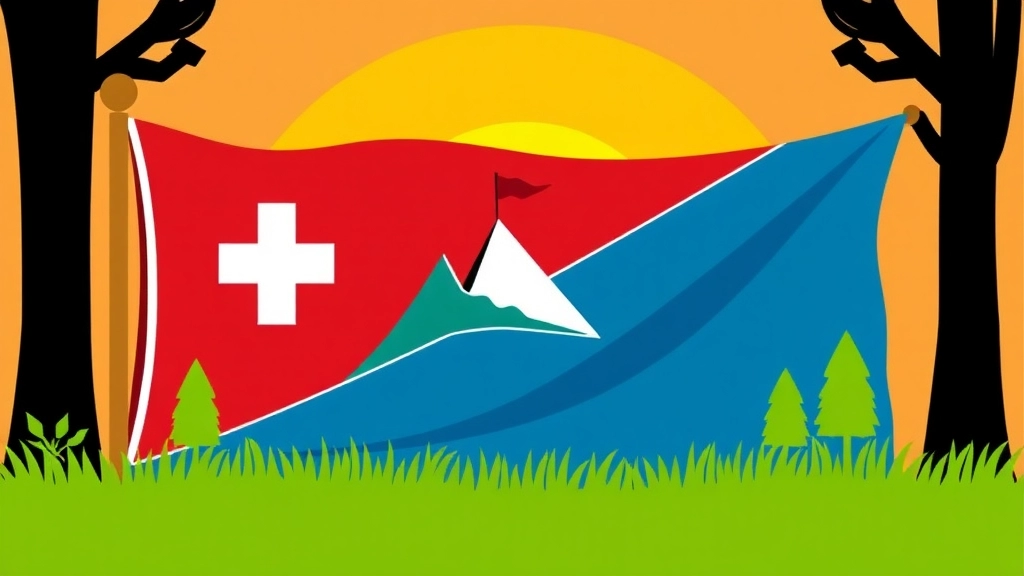
Ever wondered why summer camps have flags everywhere?
Let’s dive into it.
Camp flags are more than just decoration.
They serve multiple purposes that make camp life easier and more fun.
Identity and Team Spirit
First off, flags are a great way to build identity and team spirit.
Imagine arriving at camp and seeing a flag with your team’s logo.
Instantly, you feel like you belong.
Flags help campers identify their groups, cabins, or activity zones.
It’s like wearing a uniform, but way cooler.
Navigation and Safety
Flags also play a crucial role in navigation and safety.
Picture a huge camp with various activity areas.
Flags make it easy to find your way around.
They can mark specific spots like the swimming area, dining hall, or first aid station.
In emergencies, knowing where to go can save precious time.
Activity Markers
Ever played Capture the Flag?
It’s a classic camp game that revolves around—you guessed it—flags.
But flags aren’t just for games.
They can mark start and finish lines for races or designate zones for different activities.
Think of them as versatile markers that make activities more organised.
Communication
Flags can also be a form of communication.
Different colours or patterns can signal various messages.
For example, a red flag might mean “stop” or “danger”, while a green flag might signal “go” or “all clear”.
It’s an efficient way to convey important information quickly.
Ceremonial Uses
Let’s not forget the ceremonial uses.
Raising the camp flag at the start of the day or during special events can be a meaningful tradition.
It sets the tone and brings everyone together.
Marketing and Promotion
Flags are also fantastic for marketing and promotion.
A well-designed flag can attract attention and make your camp stand out.
It’s like having a mobile billboard that showcases your camp’s unique vibe.
Customisation Options for Summer Camp Flags
Are you feeling overwhelmed by the sheer number of customisation options for summer camp flags? I get it. Choosing the right flag can feel like a big decision, but it doesn’t have to be. Let’s break it down and make it simple.
Why Customise Your Summer Camp Flag?
First off, why even bother customising a flag? Well, a customised flag can:
- Boost Camp Spirit: Nothing gets kids and staff pumped up like a flag that represents their camp.
- Promote Unity: A unique flag can serve as a unifying symbol for everyone involved.
- Enhance Visibility: Custom flags make your camp easily recognisable, whether for safety or marketing purposes.
What Are Your Customisation Options?
When it comes to customising your summer camp flag, you’ve got a lot of choices. Here’s a quick rundown:
Design Elements:
- Logos and Emblems: Incorporate your camp’s logo or mascot.
- Colours: Choose colours that represent your camp’s identity.
- Text: Add your camp’s name, motto, or any other text that resonates with your camp’s spirit.
Shapes and Sizes:
- Standard Rectangle: The classic choice.
- Pennants and Banners: Great for specific events or areas within the camp.
- Custom Shapes: Get creative with shapes that reflect your camp’s unique personality.
Materials:
- Polyester: Durable and weather-resistant.
- Nylon: Lightweight and great for high-wind areas.
- Cotton: Offers a traditional look but may not be as durable outdoors.
Printing Techniques:
- Screen Printing: Ideal for simple designs and bulk orders.
- Digital Printing: Perfect for intricate designs with multiple colours.
- Embroidery: Adds a touch of class and durability.
Real-World Examples
Let me give you a couple of examples to make it real:
- Camp Sunshine: They opted for a bright yellow flag with a smiling sun logo and their motto âShine On!â in bold letters. The kids loved it, and it became a symbol of their sunny, positive vibes.
- Adventure Camp: They went with a rugged, forest green flag featuring a mountain emblem and their name in a rustic font. It perfectly captured the adventurous spirit of their camp.
Tips for Choosing the Right Customisation
Alright, now that you know your options, here are some tips to help you make the best choice:
- Consider Your Audience: Think about what will resonate most with your campers and staff.
- Think About Longevity: Choose materials and designs that will stand the test of time and weather.
- Get Feedback: Don’t be afraid to ask for input from your camp community. They might have some great ideas!
For more creative ideas, check out our summer camp bulletin board ideas and make sure your camp stands out. Also, if you are looking for some fun activities, explore our games for summer camp fun to keep the campers engaged!
Materials and Durability of Outdoor Camp Flags
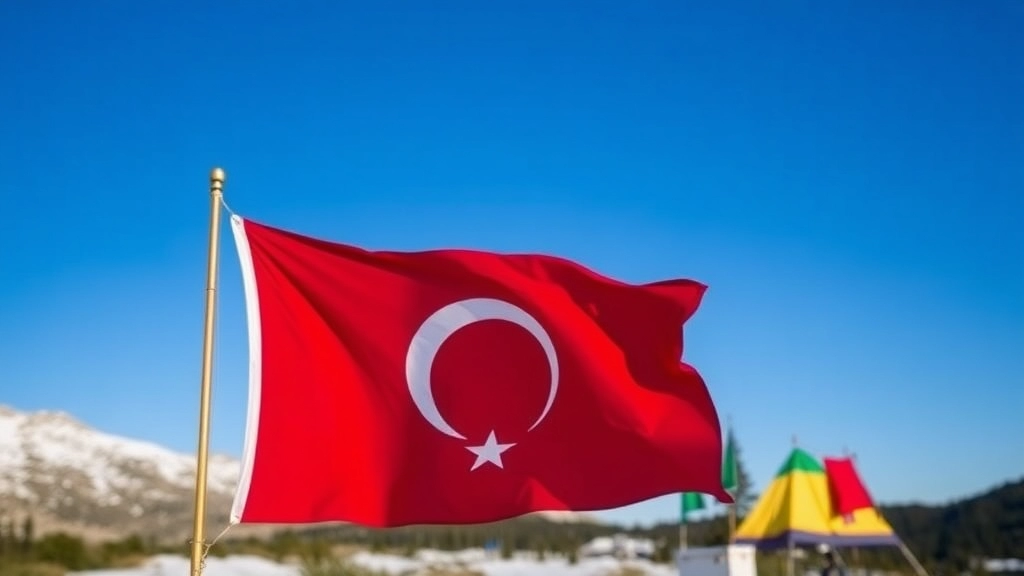
Ever wondered why some camp flags look like they’ve been through a war zone after just one summer, while others still look brand new?
Yeah, me too.
Choosing the right materials for your outdoor camp flags is crucial.
You don’t want to spend money on flags that won’t last.
So, let’s break it down.
What Materials Are Best?
The material of your camp flag can make or break its durability.
Here are the top contenders:
1. Polyester:
- Pros:
- Lightweight.
- Dries quickly.
- Resistant to fading.
- Cons:
- Can tear easily in high winds.
2. Nylon:
- Pros:
- Strong and durable.
- Resistant to mildew.
- Great for high-wind areas.
- Cons:
- Can be a bit pricier.
3. Cotton:
- Pros:
- Natural look and feel.
- Eco-friendly.
- Cons:
- Fades quickly.
- Not great in wet conditions.
How to Increase Durability
So, you’ve picked your material.
Now, how do you make sure it lasts?
Here are some pro tips:
- Double Stitching: Ensure your flags have double-stitched seams. It’s a game-changer for longevity.
- UV Protection: Look for flags with UV-resistant coatings. It keeps the colours vibrant.
- Reinforced Edges: Flags with reinforced edges can withstand more wear and tear.
Real-Life Example
I once had a flag that was made of cheap polyester.
It didn’t even last a month before it started tearing.
Then, I switched to a high-quality nylon flag with double stitching.
It’s been three years, and it still looks fantastic.
Choosing the right material for your camp flag isn’t just about looks.
It’s about making a smart investment.
Go for durability.
Think about the conditions your flag will face.
And don’t skimp on quality.
Your campers will thank you.
And so will your wallet.
For more tips on flag installation and maintenance, check out our section on Best Practices for Flag Installation and Maintenance.
Keep it real. Keep it durable. Keep it flying high.
How to Choose the Right Flag for Your Camp’s Needs
So, you’re in the market for a summer camp flag, but where do you start? Choosing the right flag can feel like navigating a maze, but it doesn’t have to be. Here are some real questions and worries you might have, and how to tackle them head-on.
What Do You Need Your Flag For?
First off, what’s the purpose of your flag? Is it for team identification during games, a camp logo display, or just adding some flair to your grounds? Knowing the primary function will narrow down your options big time.
- Team Identification: Bright, bold colours and clear symbols are your best friends here.
- Camp Logo Display: Go for something that highlights your camp’s branding and ethos.
- Decoration: Think fun, vibrant designs that add to the camp’s atmosphere.
What Material Should You Choose?
Next up, material matters. Your flag will be outside, battling the elements. You don’t want it shredding in the first gust of wind.
- Polyester: Durable and weather-resistant, good for long-term use.
- Nylon: Lightweight and flies well, but might not be as durable.
- Cotton: Looks great but isn’t as weather-resistant. Ideal for indoor use or short-term outdoor events.
How Big Should Your Flag Be?
Size does matter. A flag that’s too small won’t be visible from a distance, and one that’s too big might be overwhelming.
- Small Flags (12″x18″): Perfect for marking specific areas or small team flags.
- Medium Flags (2’x3′): Great for general use and visibility.
- Large Flags (3’x5′ and above): Ideal for main flagpoles and making a statement.
What Design Elements Are Essential?
When it comes to design, simplicity is key. You want your flag to be easily recognisable and memorable.
- Bold Colours: Make your flag stand out.
- Clear Symbols: Easy to identify from a distance.
- Minimal Text: Too much text can be hard to read.
Stories from the Field
Take Camp Sunshine, for example. They wanted a flag that represented their core valuesâfun, friendship, and adventure. They chose a medium-sized polyester flag with a sunburst design in bright yellow and blue. It was a hit! The kids loved it, and it held up all summer long, through rain and shine.
Final Checklist
Before you make your final decision, here’s a quick checklist:
- Purpose: What will the flag be used for?
- Material: Polyester, nylon, or cotton?
- Size: Small, medium, or large?
- Design: Bold colours, clear symbols, minimal text?
By answering these questions, you’ll be well on your way to choosing the perfect flag for your camp’s needs. Trust me, getting this right will make a world of difference. So, go out there and pick a flag that your campers will rally around and remember for years to come.
For more ideas on making your camp experience unforgettable, check out our summer camp game ideas and summer camp week themes.
Designing Your Own Flag: Tips and Ideas
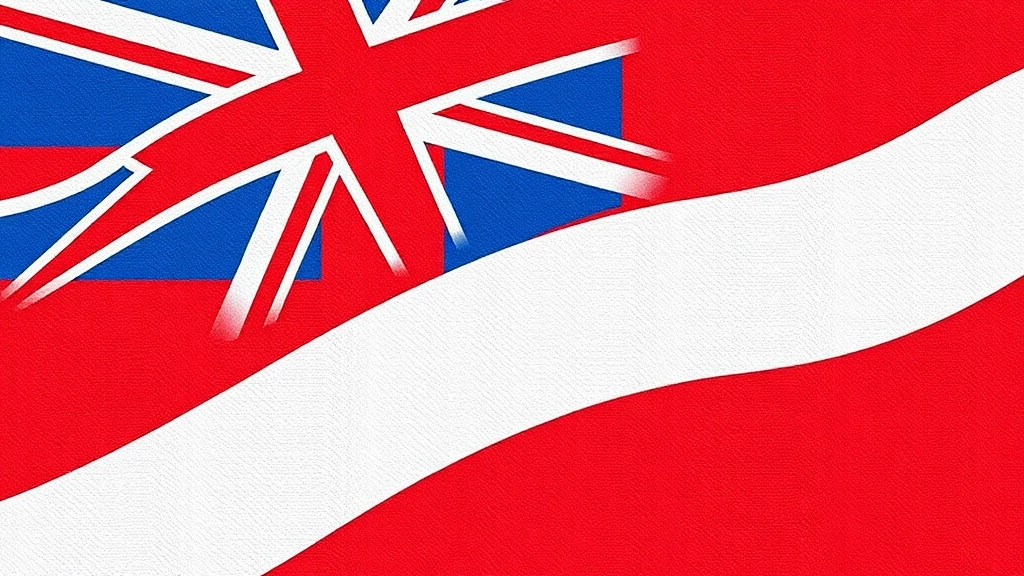
Ever thought about designing your own summer camp flag but don’t know where to start?
You’re not alone.
Many camp organisers face the same challenge.
Designing a flag can feel like a daunting task, but it doesn’t have to be.
Here are some practical tips and ideas to get you going.
Start with a Clear Purpose
Why do you need a flag?
Is it for team identity, decoration, or a specific event?
Knowing your purpose will guide your design choices.
Keep It Simple
A good flag design is simple and memorable.
Think about the most iconic flags in the world—they’re not cluttered.
Use bold colours and straightforward shapes.
Use Meaningful Symbols
Incorporate elements that represent your camp’s values or history.
A tree for nature, a book for learning, or a star for excellence.
These symbols should resonate with your campers and staff.
Choose the Right Colours
Colours evoke emotions.
Blue can be calming, red can be energising.
Pick colours that align with your camp’s vibe.
Get Input from Campers
Why not involve the campers in the design process?
Hold a flag design contest.
This can boost engagement and make the flag more meaningful.
Test Different Designs
Mock up a few designs and see how they look in different settings.
Print them out, hang them up, and get feedback.
Practical Tips for Designing
- Use a Flag Design Tool: There are online tools that can help you create a flag without needing design skills.
- Stick to Two or Three Colours: Too many colours can make the flag look busy.
- Make It Scalable: Your design should look good whether it’s on a small patch or a large banner.
Examples to Inspire You
- A camp in the mountains might use a silhouette of a mountain and a pine tree.
- A coastal camp could feature waves and a sun.
Capture the Flag: A Summer Camp Tradition
Ever wondered why “Capture the Flag” is such a big deal at summer camps? Well, let’s dive right in. This game isn’t just a fun activity; it’s a rite of passage, a team-building powerhouse, and a memory-maker all rolled into one. If you’re running a summer camp, you can’t afford to skip this classic. Trust me, your campers will thank you.
What’s the Big Deal About Capture the Flag?
Here’s the thing: kids love adventure. They crave excitement, and Capture the Flag delivers just that. Picture this: two teams, each with their own flag, strategising to capture the opponent’s flag while defending their own. It’s a game of strategy, speed, and teamwork. And let’s be honest, who doesn’t love a good chase?
Why It Works
Team Building: This game teaches kids how to work together. They learn to communicate, strategise, and trust each other. It’s a crash course in leadership and cooperation.
Exercise: Kids get to run, dodge, and hide. It’s a full-body workout disguised as fun.
Problem-Solving: They need to think on their feet. Should they defend or attack? What’s the best route to the enemy’s flag? These decisions boost their critical thinking skills.
How to Set It Up
Setting up a game of Capture the Flag isn’t rocket science, but a few tips can make it smoother:
- Divide the Area: Split your camp area into two territories. Make sure it’s big enough for the kids to run around but not so large that they get lost.
- Mark Boundaries: Use cones, ropes, or even natural landmarks like trees to mark the boundaries.
- Designate Safe Zones: Each team should have a ‘home base’ where their flag is kept and a ‘jail’ for captured players.
- Flags: Use brightly coloured flags that are easy to spot. Trust me, nothing kills the fun faster than losing the flag in the bushes.
Pro Tips for an Epic Game
- Balanced Teams: Make sure the teams are evenly matched. You don’t want one side to dominate; it kills the fun.
- Clear Rules: Lay down the rules before you start. Can players guard their flag? How do you free captured teammates? Clear rules prevent arguments and keep the game fair.
- Safety First: Make sure the play area is safe. No sharp objects, uneven ground, or other hazards. Safety always comes first.
Real Stories, Real Fun
I remember one summer when we had a particularly intense game of Capture the Flag. One team decided to bury their flag partially under some leaves. It took the other team ages to find it, and the suspense was palpable. The kids were talking about that game for weeks! It’s these kinds of stories that make Capture the Flag a staple in any summer camp.
Why You Should Include It in Your Camp
If you’re still on the fence about including Capture the Flag in your summer camp, let me break it down:
- Engagement: Kids are fully engaged, both mentally and physically.
- Tradition: It’s a game with a rich history in summer camps. You’re not just offering an activity; you’re continuing a beloved tradition.
- Versatility: You can tweak the rules to suit the age group and skill level of your campers.
For more ideas on making your camp a hit, check out our Summer Camp Ideas: Fun Activities for Kids and ensure your camp is well-prepared with our Summer Camp Packing Checklist: Ultimate Guide.
Best Practices for Flag Installation and Maintenance
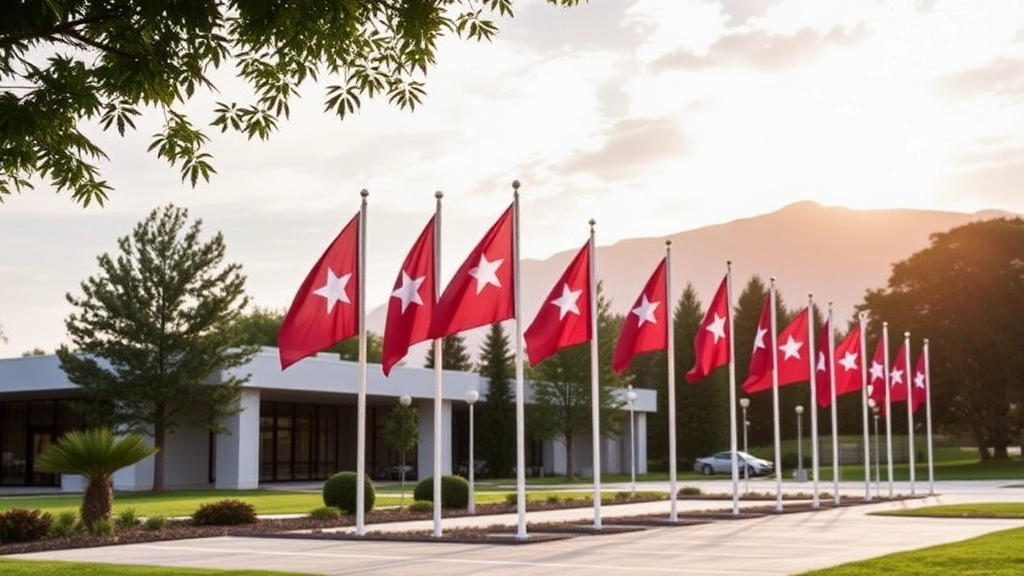
Ever struggled with flag installation and maintenance at your summer camp?
You’re not alone.
Getting it right can be a game-changer for your camp’s vibe and safety.
Let’s dive into how you can nail this.
Why Proper Installation Matters
First off, why should you care about proper flag installation?
Simple.
A well-installed flag stands tall, looks sharp, and lasts longer.
No one wants a flag that’s sagging or, worse, flying away.
Quick Installation Tips
Here are some no-nonsense tips to get your flag up and flying:
- Choose the Right Spot: Find a visible, open area. Avoid spots with heavy foot traffic or potential obstructions.
- Sturdy Pole: Use a durable pole. Aluminium or fibreglass are solid choices. Avoid flimsy materials.
- Secure Fastenings: Use strong clips or grommets. Double-check they’re tight.
- Right Height: Keep it high enough to be seen but low enough for maintenance. Around 20-30 feet is a good range.
Maintenance Must-Dos
Keeping your flag in top shape isn’t rocket science.
Here’s what you need:
- Regular Inspections: Check for wear and tear every couple of weeks. Look for fraying, fading, or damage.
- Clean It Up: Dirt and grime can ruin the fabric. Hand wash with mild soap and water. Avoid harsh chemicals.
- Weather Watch: Take the flag down in extreme weather. High winds, heavy rain, and snow can wreak havoc.
- Rotate and Rest: If you have multiple flags, rotate them. This gives each flag a break and extends their lifespan.
Real-Life Example
Remember that time we had a flagpole snap during a storm?
Yeah, not fun.
We learned the hard way.
Now, we always double-check our poles and fastenings before the season starts.
Pro Tips from the Field
- Invest in Quality: Cheap flags and poles will cost you more in the long run. Go for quality materials from the get-go.
- Training: Make sure your staff knows how to install and maintain the flags. A little training goes a long way.
- Backup Plan: Always have a spare flag and pole. Trust me, you’ll thank yourself later.
Using Flags for Summer Camp Marketing and Promotion
Ever thought about how a simple flag can make a massive impact on your summer camp’s marketing? Trust me, it’s a game-changer. We all know that standing out in a sea of summer camps can be tough, but a well-designed flag can make your camp unforgettable. Let’s dive into how you can use flags to boost your camp’s visibility and attract more campers.
Why Use Flags for Marketing?
First things first, why even bother with flags? Here are some real concerns you might have:
- Visibility: How do I make my camp stand out in a crowded market?
- Cost-Effective: Is there a budget-friendly way to promote my camp?
- Engagement: How can I create a memorable experience for campers and parents?
Flags can address all these worries. They’re eye-catching, versatile, and relatively inexpensive compared to other marketing tools. Plus, they create a sense of identity and pride among campers.
Types of Flags for Marketing
When it comes to marketing, not all flags are created equal. Here are some options:
- Banners: Perfect for entrances and event spaces.
- Feather Flags: Great for drawing attention from afar.
- Handheld Flags: Awesome for parades and group activities.
Each type serves a different purpose, so mix and match to cover all your bases.
Customization Options
Customisation is key. You want your flag to scream your camp’s personality. Here’s how you can do it:
- Colours: Use your camp’s colours to build brand recognition.
- Logos and Mascots: Make sure these are prominently displayed.
- Slogans: A catchy slogan can stick in people’s minds.
Real-Life Examples
Picture this: You’re driving past a summer camp and see a giant feather flag with a vibrant design and catchy slogan. You can’t help but take a second look. That’s the power of a well-designed flag.
Or imagine a parade where kids are waving handheld flags with your camp’s logo. It’s a walking advertisement, and parents are bound to notice.
Installation and Maintenance
You might be thinking, “This sounds great, but how do I keep these flags looking good?” Here’s a quick guide:
- Placement: Ensure flags are in high-traffic areas.
- Durability: Invest in weather-resistant materials.
- Regular Checks: Inspect flags regularly for wear and tear.
Using Flags Online
Don’t just stop at physical flags. Use images of your flags on your website, social media, and promotional materials. This creates a cohesive brand image that’s hard to ignore.
For more creative ideas on how to make your camp stand out, check out our creative summer camp names and get inspired. Also, ensure you have everything you need with our summer camp packing checklist.
Seasonal Trends in Camp Flag Designs
Ever wondered why some camp flags just scream summer while others fall flat?
Let’s dive into the seasonal trends in camp flag designs that can make your camp stand out.
Why Seasonal Trends Matter
When it comes to camp flags, staying on-trend can make or break your camp’s vibe.
Imagine rocking up to camp and seeing a flag that looks like it’s from the 90s.
Not cool, right?
What’s Hot This Summer?
- Bright Colours: Think neon greens, electric blues, and sunny yellows. These colours not only catch the eye but also set a vibrant tone for the camp.
- Minimalist Designs: Less is more. Simple icons or clean lines are in. No one wants to stare at a cluttered flag.
- Nature-Inspired Themes: Leaves, mountains, and rivers. Nature is timeless, and it speaks to the heart of any camper.
What’s Outdated?
- Overly Complex Graphics: Too much detail can be overwhelming. Keep it simple.
- Dark, Moody Colours: Summer is all about light and fun. Dark colours can feel out of place.
- Old-School Fonts: Modern, clean fonts are in. Ditch the curly, hard-to-read scripts.
How to Keep Up with Trends
- Social Media: Follow popular camp accounts on Instagram and Pinterest. They’re often ahead of the curve.
- Feedback from Campers: Ask your campers what they like. They’re the ones who’ll be looking at the flags all summer.
- Industry Events: Attend camp fairs and trade shows. See what’s new and exciting.
Real-Life Example
Last summer, we switched our camp flag design to a minimalist mountain range with a bright sun.
The response was incredible.
Campers loved it, and it became a popular photo backdrop.
Final Thoughts
Staying on top of seasonal trends in camp flag designs can elevate your camp’s appeal.
Bright colours, minimalist designs, and nature themes are your best bet.
And remember, keep it fresh, keep it real, and always listen to your campers.
So, what are you waiting for?
Get designing and make your camp the talk of the summer!
For more ideas on how to enhance your camp experience, check out our budget-friendly and eco-friendly decor tips and explore the ultimate guide to kids’ summer camps.
FAQs on Summer Camp Flags
What are the primary uses of camp flags in summer programs?
Camp flags serve multiple purposes including building identity and team spirit, aiding in navigation and safety, marking activity zones, facilitating communication, and being used in ceremonies and marketing.
How do camp flags help in building team spirit?
Flags help in building team spirit by providing a visual symbol that represents different groups, cabins, or activity zones. This fosters a sense of belonging and unity among campers.
What materials are best for durable outdoor camp flags?
The best materials for durable outdoor camp flags include:
- Polyester: Lightweight and quick-drying but can tear easily in high winds.
- Nylon: Strong, durable, and mildew-resistant, making it ideal for high-wind areas.
- Cotton: Natural and eco-friendly but fades quickly and is not great in wet conditions.
How can I increase the durability of camp flags?
To increase the durability of camp flags, consider:
- Double Stitching: Ensures longer-lasting seams.
- UV Protection: Keeps colors vibrant.
- Reinforced Edges: Withstands more wear and tear.
What are some tips for designing a camp flag?
When designing a camp flag:
- Start with a Clear Purpose: Know why you need the flag.
- Keep It Simple: Use bold colors and straightforward shapes.
- Use Meaningful Symbols: Incorporate elements that represent your camp’s values or history.
- Choose the Right Colors: Pick colors that align with your camp’s vibe.
- Get Input from Campers: Involve campers in the design process.
- Test Different Designs: Mock up a few designs and get feedback.
What are the best practices for flag installation at a summer camp?
For proper flag installation:
- Choose the Right Spot: Find a visible, open area away from obstructions.
- Sturdy Pole: Use durable materials like aluminum or fiberglass.
- Secure Fastenings: Use strong clips or grommets and double-check their tightness.
- Right Height: Install at a height of 20-30 feet for visibility and easy maintenance.
How do I maintain a camp flag?
To maintain a camp flag:
- Regular Inspections: Check for wear and tear every couple of weeks.
- Clean It Up: Hand wash with mild soap and water, avoiding harsh chemicals.
- Weather Watch: Take the flag down in extreme weather conditions.
- Rotate and Rest: Rotate multiple flags to extend their lifespan.
Why is it important to use quality materials for camp flags?
Using quality materials for camp flags ensures they last longer, look better, and withstand harsh conditions. Investing in quality from the start can save money in the long run and provide a better experience for campers.
References
-
Why Camp Flags Are Important
-
How to Choose the Right Camp Flag Material
-
Tips for Creating Your Own Camp Flag

